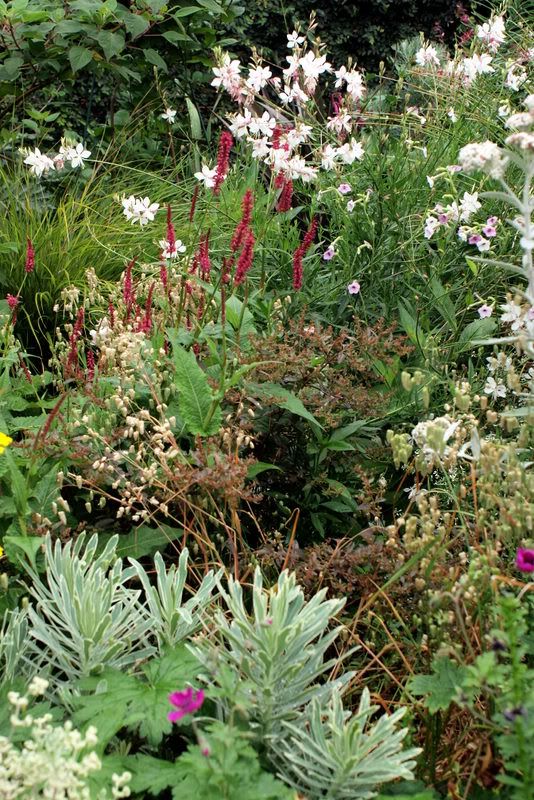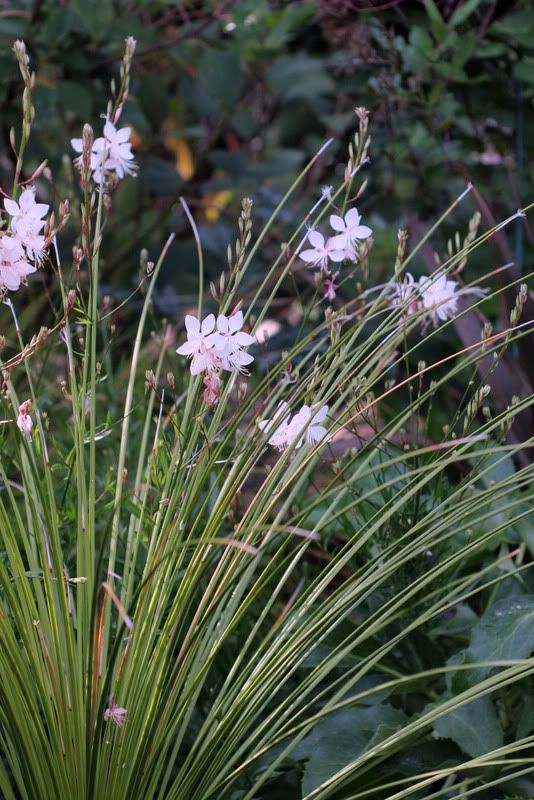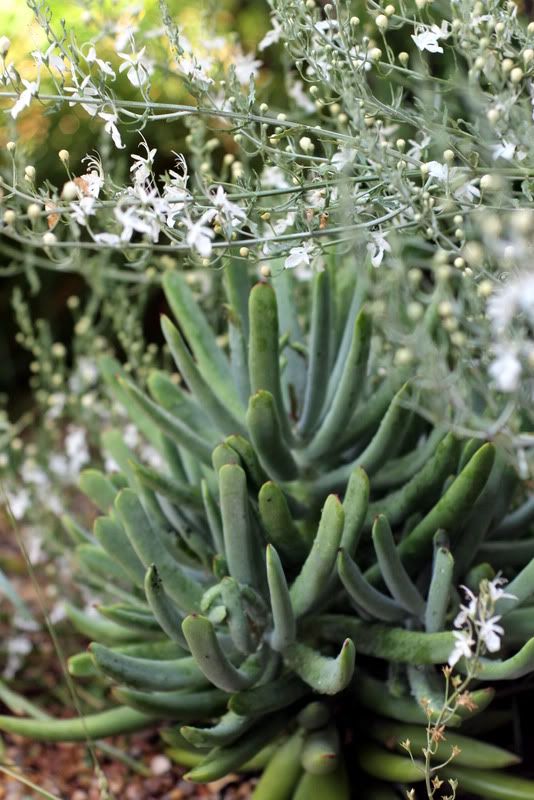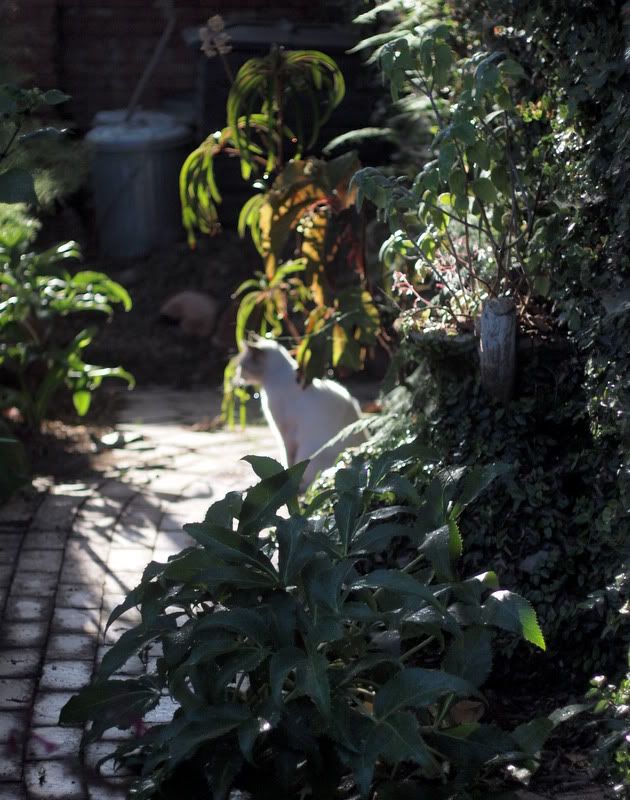Look away briefly, and June overwhelms winter’s carefully laid plans.
Since spring in Southern California really gets going in March, by June plant growth is at full throttle.
The agaves, succulents, and Mediterranean evergreen shrubs have presented a sedate, enchanting picture all winter and spring.
By spring, I’m ready for a riot, for a zero-to-60 surge in vegetation that constantly teeters on tipping into chaos. I’m ready for summer, in whatever surprising form it will take. This year the mid-border perovskias I planned to enjoy late summer have been swallowed whole by June. I should have pulled out the burgeoning self-sown quaking grass Briza maxima to make way for the perovskia, but enjoyed the grasses’ dangling lockets far too long. Two eyrngium have disappeared under a huge gaura’s skirts, but I count this year a success, since one E. planum has managed to flower and may now hopefully reseed.
What looks like ample space in February is no match for June’s sharp elbows.
Alarmed? Not really. This is where it gets exciting. The gauras last year barely stirred into life.
The perovskias are struggling somewhere amongst the haloragis and quaking grass, meant to rise up with the Persicaria amplexicaule.
Sure, many of these plants are easy thugs in areas with summer rain. I’m just grateful for the lush drama they bring to my summer-dry garden.

The Amicia zygomeris planted last fall has been a mesmerizing presence that I’ve allowed to grow as large as it pleases.
Permissiveness the first year in the garden, discipline the next.
In a small garden, something’s gotta give, and this year it’s the crocosmia getting squeezed by the amicia.
Crocosmia is tough enough to take it and will be back in force next year.

I’m keeping a careful eye on this Lobelia tupa, moved last fall to this roomier spot.
Nothing is allowed to encroach on this lobelia, not even Salvia ‘Wendy’s Wish.’
(The California poppies are long-lasting in this year’s coolish spring/early summer.)

I’d never subject anything really special to the border melee in June. That’s what containers are for.
But the pots lining the border do see a fair amount of action. Gaura lindheimeri leans into a potted sotol. Geum magellanicum gets support from potted Agave titanota*.


Onslaught of Salvia cacaliifolia barely held in check by a potted, battled-scarred A. americana. This salvia is flowering so well in this spot, I’m giving it a lot of latitude.
Cotyledon orbiculata var. oblonga, the ‘Finger aloe’ disappearing under Teucrium ‘Fairy Dust.’


Evie among the hellebores, begonias, and compost buckets against the shady back wall contemplates the pushy, shoving garden spectacle of June.

*A guess at this unnamed agave’s ID. Input welcome.

Late to the party here in Norcal, I still have wide swaths of bare ground, no need to water and snails the size of walnuts. I will be interested to see how the Lobelia tupa fares for you-I have yet to bring one home.
How long have you had that Amicia?
Kathy, I’m shocked. I’ve had my finger on the Sluggo spout quite a bit too.
Dustin, from Plant Delights, who say they got it from Sean Hogan/Cistus. Supposedly from the “Mexican mountains.” I planted mine fall 2010. Seems to really like it here. I haven’t seen anything like it before. Love the pea family!
i’m so impressed with your photos, as always. you capture the most delicate flowers, which can be tricky. i love the play of cool and warm colors, and the contrasting textures!
A identifying feature of that (beautiful!) Agave is the lack of serration at the tips of the leaves. There is a smooth area between the last leaf-edge hook and the terminal spine, and that edge is dark-colored. Is the texture of the leaf somewhat rough, like sandpaper (scabrous), or is it smooth like that of an attenuata? A sandpaper-like texture eliminates a whole lot of possibilities. Could be titanota or close enough. Apparently even in nature there is variation. Seedlings grown from seed collected from the same plant show significant differences.
These are some things I have picked up reading the intricate wranglings over Agave ID at Xericworld…I also learned even the experts are baffled a lot of the time. Nothing will be cleared up until someone starts selling home Agave DNA test kits.
At any rate, the delightful contrast between the dainty Geum and the heavy power of the Agave is probably what really matters!
Hoov, thanks for the ID help! It has a rough leaf. Relatively slow-growing. I’ve it many years, can’t remember when or where I bought it.